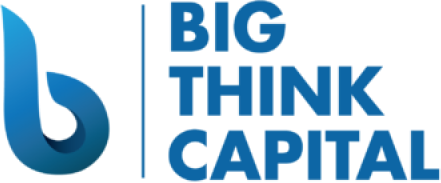Exploring the Impact of Inflation Trends on Small Business Financing in 2025
Estimated reading time: 7 minutes
- Understand how inflation affects pricing strategies and profitability.
- Explore various financing options suitable for small businesses.
- Learn effective cash flow management strategies during inflationary periods.
Table of Contents
- Understanding Inflation Trends in 2025
- The Importance of Smart Financing Strategies
- Coping Mechanisms for Inflation-Driven Challenges
- Practical Takeaways for Business Owners
- Conclusion
Understanding Inflation Trends in 2025
Inflation can affect small businesses in numerous ways. According to the Bureau of Labor Statistics (BLS), the Consumer Price Index (CPI) showed a year-over-year increase of 4.0% as of January 2025. This persistent inflationary environment can challenge pricing strategies, operational costs, and profitability.
- Rising Costs: Small business owners face increased costs in raw materials, labor, and overhead. This increase can squeeze budgets and generate cash flow challenges.
- Interest Rate Fluctuations: In response to inflation, the Federal Reserve has been adjusting interest rates, which affects borrowing costs. Higher rates mean higher monthly payments on loans, impacting the overall financial health of small businesses.
- Consumer Behavior: Inflation influences consumer spending habits as customers may cut back on discretionary purchases. This adjustment can lead to decreased sales for many small businesses, creating a ripple effect on cash flow and financing needs.
The Importance of Smart Financing Strategies
In an inflationary environment, having a clear financing strategy becomes critical for small business owners. Here are steps that entrepreneurs can take to navigate this evolving financial landscape.
1. Assess Your Financing Options
Understanding the available funding products is vital when you need capital. At Big Think Capital, we offer various financing solutions that accommodate different business needs:
- Working Capital Advances: Designed for businesses with fluctuating revenue, these advances provide quick access to cash without the need for extensive documentation.
- SBA Loans: The Small Business Administration offers loans with favorable terms, making it easier for small businesses to secure long-term funding.
- Equipment Financing: If upgrading or acquiring new equipment is essential for your business, equipment financing can be an excellent way to preserve cash flow while obtaining necessary assets.
- Merchant Cash Advances (MCA): This is a viable option for businesses that rely heavily on credit card sales and need cash quickly.
- Lines of Credit: This flexible funding option allows businesses to access capital as needed, making it suitable for managing cash flow during inflation-driven expenses.
2. Optimize Your Cash Flow Management
Effective cash flow management becomes increasingly important in times of inflation. Here are strategies to consider:
- Regular Forecasting: Create forecasts that anticipate potential cash flow challenges due to inflation. By projecting both income and expenses, you can prepare for necessary funding adjustments.
- Cut Unnecessary Expenses: Conduct a thorough review of your business expenses. Eliminating any non-essential costs can help improve your bottom line. Focus on high-impact areas where you can streamline operations without sacrificing quality.
- Negotiate with Suppliers: If prices are rising with your suppliers, consider negotiating longer-term pricing contracts or bulk purchase agreements to mitigate inflation effects.
3. Prepare for Increased Interest Rates
With the likelihood of rising interest rates, small business owners should take proactive steps to secure favorable lending conditions before they rise further:
- Lock in Rates: If you’re considering borrowing for expansion or operational needs, locking in current rates can save you from potential future increases.
- Refinancing Existing Debt: If you already have loans, review your potential for refinancing to achieve a lower rate before rates escalate further.
- Consider Fixed-Rate Loans: Opting for fixed-rate loans can provide predictability in budgeting, helping mitigate the risk of increased payments from variable-rate loans.
Coping Mechanisms for Inflation-Driven Challenges
As inflation presents unique challenges, entrepreneurs must employ coping mechanisms that foster resilience. Here are actionable methods to consider:
- Diversify Income Streams: Relying on a single product or service can be risky during inflationary periods. Explore ways to diversify your offerings to stabilize income.
- Invest in Technology: Utilizing technology to streamline operations can improve efficiency and reduce costs. From inventory management systems to customer relationship management platforms, the right technology can be an asset.
- Strengthen Customer Relationships: Building loyalty among your customer base can yield long-term benefits. Engage with your customers through personalized marketing, loyalty programs, and excellent service.
Practical Takeaways for Business Owners
As we navigate the complexities of inflation in 2025, here are three essential takeaways:
- Stay Informed: Regularly review economic indicators and keep up with inflation forecasts to adjust your financing strategy proactively.
- Be Flexible with Financing Solutions: With a variety of alternative lending products available, stay open to exploring different options that can best fit your current and future funding needs.
- Prioritize Financial Health: Focus on maintaining a healthy cash flow and optimizing your operational efficiency. This approach will position your business to weather inflationary pressures more effectively.
Conclusion
Navigating inflation in 2025 may present challenges for small business owners, but with the right strategies and financing options, it is possible to sustain operations and drive growth. By understanding the impacts of inflation, exploring various financing products, and implementing effective coping strategies, you can position your business for success even in a fluctuating economic landscape.
If you’re interested in learning more about how Big Think Capital can assist with your funding needs, visit bigthinkcapital.com or speak with one of our funding experts today. Your business’s financial future deserves informed strategies and expert guidance in the face of inflationary pressures.
FAQ
What is the current inflation rate for small businesses in 2025?
The Consumer Price Index (CPI) showed a year-over-year increase of 4.0% as of January 2025, according to the Bureau of Labor Statistics (BLS).
How can small businesses manage rising costs due to inflation?
Small businesses can manage rising costs by optimizing cash flow management, cutting unnecessary expenses, and negotiating with suppliers for better pricing.
What financing options are available for small businesses during inflation?
Financing options include working capital advances, SBA loans, equipment financing, merchant cash advances, and lines of credit.






